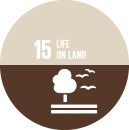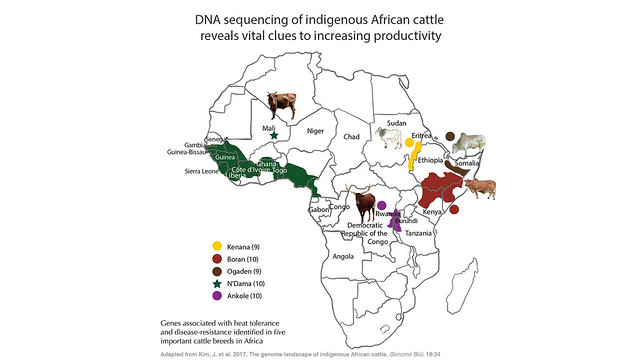 Since their introduction to Africa thousands of years ago from the Middle East and the Indian subcontinent, cattle breeds have gradually adapted to cope with hugely varying environments, from the Sahelian desert to the subhumid tropical forests. These cattle are important sources of meat, milk, traction and manure across the continent. With rapid population growth and a rising urban middle class, they will become even more significant as demand for meat and milk is expected to more than double in sub-Saharan Africa from 2000 to 2030.
Since their introduction to Africa thousands of years ago from the Middle East and the Indian subcontinent, cattle breeds have gradually adapted to cope with hugely varying environments, from the Sahelian desert to the subhumid tropical forests. These cattle are important sources of meat, milk, traction and manure across the continent. With rapid population growth and a rising urban middle class, they will become even more significant as demand for meat and milk is expected to more than double in sub-Saharan Africa from 2000 to 2030.
Identifying the genetic basis underlying heat tolerance and resistance to killer diseases—major production constraints—offers huge opportunities to increase meat and milk productivity to meet rising demand. It opens the way to the scaling up of breeding programs for these specific key traits, potentially enhancing the incomes of hundreds of millions of smallholders worldwide.




![Roughly the length of a finger, the insects fly together by the millions and devour crops. [Tiksa Negeri/Reuters]](https://storage.googleapis.com/cgiarorg/2024/04/Tiksa-Negeri-Reuters-640x428.png)